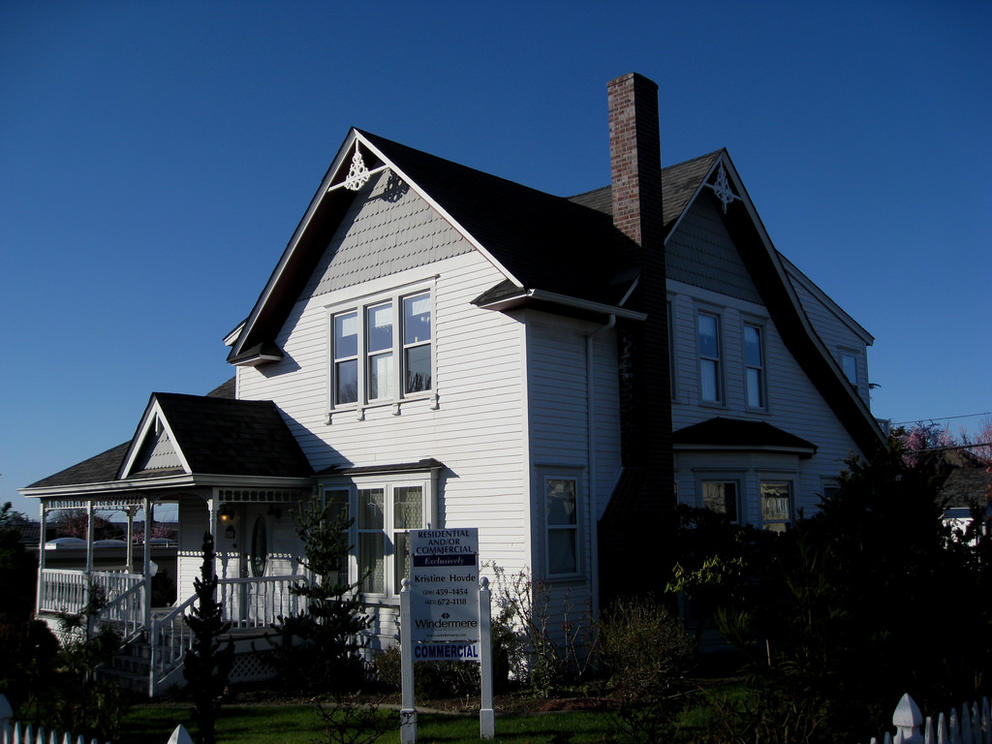As the deadline looms for the Legislature to fully fund public schools in our state, lawmakers, city and county officials, and community leaders are sharing proposals and ideas for reforming property taxes. That makes sense.
The property tax is one of the key tools our state and local governments rely on to pay for our kids’ education and for other vital priorities – like public safety and programs that help lift people out of poverty. And our state must grow revenue from this source to keep up with the costs of essential education needs like classroom resources and school buses, without reducing resources for other things kids need like healthy food and warm, safe homes.
But most of these proposals and ideas are not addressing a key problem – the fact that our property taxes are part of a statewide tax code that is completely upside down. People with the lowest incomes pay seven times as much in state and local taxes as a share of their incomes as the wealthiest 1 percent of Washingtonians. In fact, our state has the most regressive and inequitable state and local tax code in the nation.
To turn this code right-side up, any property tax reforms that are enacted must take into account the economic security of Washingtonians with low incomes and middle incomes. A safeguard rebate that reduces property taxes for Washington homeowners and renters making less than $75,000 a year would accomplish this.
Put simply, a property tax safeguard rebate would put money back in the pockets of many families, and by extension, put money back into local economies. And the households with the lowest incomes would rightly see the biggest rebates.
This rebate is designed to strengthen other common-sense property tax reform proposals. One such proposal is to lift the 1 percent annual growth cap on property tax collections. These collections are a major funding source for schools and local services, and right now, the cap prevents that pot of money from growing more than 1 percent per year. This cap is starving funding for cities and counties, and that’s why a group of bipartisan legislators, King County Executive Dow Constantine, Seattle Mayor Ed Murray, and other community leaders throughout the state have called for this reform.
Another common-sense reform that we support is to increase revenue from the statewide property tax. This reform would provide a substantial infusion of new resources to pay for schools.
We know we can’t get something for nothing. If we want great schools in our state, we all need to chip in to pay for it. And these property tax proposals will mean that homeowners and renters will see changes in their property tax rates. (Think renters don’t pay property taxes? Rent allows a landlord to both cover expenses, like property taxes, and to make a profit.) With the safeguard rebate, however, households that are struggling to get by would actually see their property taxes decrease. The property tax safeguard rebate will mean that each year:
- Households earning less than $25,000 per year would be refunded all of the property taxes they pay, up to $1,500.
- Households earning $25,000 to $46,999 would be refunded the portion of property tax payments that exceed 1 percent of income, up to $1,250.
- Households earning $47,000 to $74,999 would be refunded the portion of property tax payments that exceed 2 percent of income, up to $1,000.
With this plan, a family in Everett paying $1,500 for their monthly home mortgage and bringing in an income of $65,000 annually would receive a $1,000 rebate. A single person in Auburn paying $800 per month in rent and making $30,000 annually would receive a $1,140 rebate.
Ultimately, this rebate is intended to strengthen the economic security of Washingtonians. And it would help protect people living in poverty from falling through the cracks. Communities across our state are facing an affordable housing crisis, and this rebate is an essential part of the solution.
This is not a new or untested concept. Eighteen states have enacted similar rebate programs with much success. In Minnesota, for example, more than 440,000 homeowners participate in that state’s Homestead Credit Refund Program, and more than 300,000 renters participate in the Renters’ Credit program. Qualifying homeowners there see an average annual rebate of $847 and renters see an average rebate of $594. To receive their safeguard rebates, Washingtonians would submit an application (either by mail or online) to the state Department of Revenue. Once the department has verified eligibility, it would send rebate checks to qualifying homeowners and renters.
While it’s likely that the Washington state rebate program that we have described here would require an amendment to our state constitution, a more scaled-down version could likely be approved with just a simple majority vote of the Legislature.
The reality is that if we want a thriving state with great schools, parks, and other programs that benefit us all, then we need more revenue to pay for it. And property taxes are a key source of revenue. Pairing the right property tax reform with this rebate would be an historic opportunity to better invest in our communities while helping fix our upside-down tax code.
As our state looks to reform property taxes to fund schools and communities, this rebate for low-income and middle-income Washingtonians must be part of the solution.


